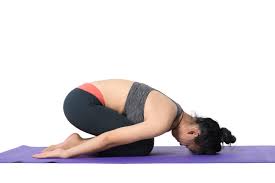Yoga is a centuries-old practice known for its ability to calm the mind, reduce stress, and improve physical well-being. One of its most significant benefits is its ability to promote better sleep. In today’s fast-paced world, sleep disorders and insomnia are common, but incorporating gentle yoga practices into your evening routine can help you fall asleep faster and enjoy a more restful night.
How Yoga Helps with Sleep
- Reduces Stress and Anxiety:
Yoga incorporates deep breathing and mindfulness, which calm the nervous system and reduce cortisol levels (the stress hormone). - Relaxes the Body:
Gentle stretches help release tension in muscles, which is essential for physical relaxation before bedtime. - Improves Breathing:
Pranayama (breathing exercises) increases oxygen flow and helps regulate the breath, promoting a sense of calm and well-being. - Enhances Mindfulness:
Yoga encourages staying present and letting go of intrusive thoughts that often interfere with sleep. - Balances the Nervous System:
Certain yoga poses activate the parasympathetic nervous system (the “rest and digest” system), helping the body shift out of the fight-or-flight mode.
Best Yoga Poses for Better Sleep
Incorporating these poses into your nightly routine can help prepare your body and mind for sleep:
- Child’s Pose (Balasana)
- How to Do It: Kneel on the floor, bring your big toes to touch, sit back on your heels, and stretch your arms forward on the ground. Rest your forehead on the mat.
- Benefits: Releases tension in the lower back, shoulders, and neck. Calms the mind and promotes relaxation.
- Legs-Up-the-Wall Pose (Viparita Karani)
- How to Do It: Lie on your back, scoot your hips close to a wall, and extend your legs upward, resting them against the wall.
- Benefits: Improves circulation, relieves tired legs, and helps relax the nervous system.
- Supine Twist (Supta Matsyendrasana)
- How to Do It: Lie on your back, draw your knees toward your chest, and let them drop to one side while keeping your shoulders grounded. Hold and switch sides.
- Benefits: Releases tension in the spine and massages the internal organs, aiding digestion and relaxation.
- Reclining Bound Angle Pose (Supta Baddha Konasana)
- How to Do It: Lie on your back, bring the soles of your feet together, and let your knees drop to the sides. Place pillows under your knees for support if needed.
- Benefits: Opens the hips, relieves stress, and encourages deep relaxation.
- Corpse Pose (Savasana)
- How to Do It: Lie flat on your back, legs extended, arms relaxed at your sides, palms facing up. Close your eyes and focus on your breath.
- Benefits: Promotes complete relaxation and helps clear the mind.
Breathing Exercises for Sleep
- 4-7-8 Breathing:
- Inhale for 4 counts, hold for 7 counts, and exhale slowly for 8 counts. This technique helps slow the heart rate and induces relaxation.
- Alternate Nostril Breathing (Nadi Shodhana):
- Close your right nostril and inhale through the left, then switch nostrils and exhale through the right. This balances the mind and calms the nervous system.
Tips for Practicing Yoga for Better Sleep
- Practice in a Dimly Lit or Dark Room:
A calm environment helps signal to your body that it’s time to wind down. - Use Props for Comfort:
Bolsters, pillows, and blankets can make poses more relaxing and restorative. - Incorporate Relaxing Music or Nature Sounds:
Gentle background sounds can enhance the calming effects of your yoga practice. - Focus on Your Breath:
Maintain slow, deep breaths throughout your practice to enhance relaxation. - Practice Regularly:
Consistency is key. Even 10-15 minutes of yoga each night can make a significant difference in your sleep quality.
Conclusion
Yoga is a gentle, accessible, and effective tool to improve sleep quality and overall well-being. By integrating calming poses, breathing exercises, and mindfulness into your bedtime routine, you can relax your body, ease your mind, and prepare yourself for a peaceful night’s sleep.
